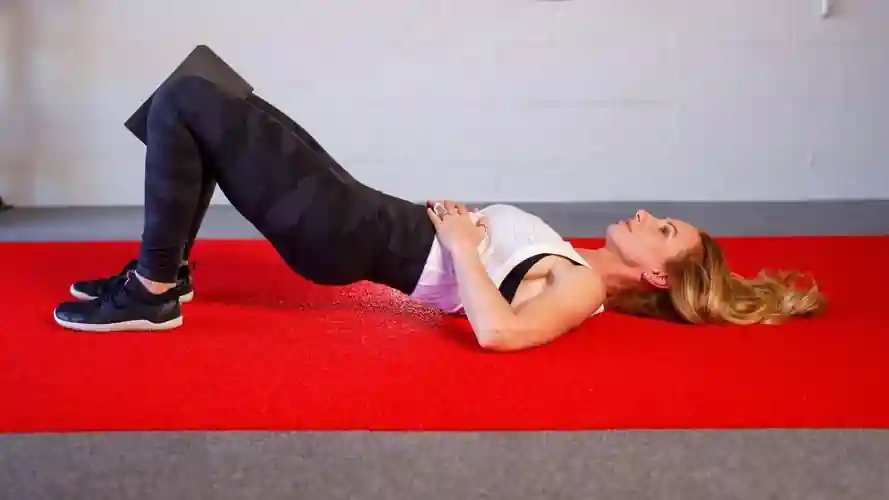Stop Stretching Your Shoulders! Here’s What Actually Works for Stiff Muscles
When your shoulders feel stiff, stretching might seem like the obvious solution. However, in many cases, stretching only provides temporary relief and can even make things worse. Instead of relying on passive stretching, a more effective approach involves targeted mobility, strength, and breathing exercises to address muscle imbalances, improve joint stability, and enhance overall function.
Why Are Your Shoulders Stiff?
The shoulder joint is the most mobile joint in the body, allowing for an extensive range of motion. However, this mobility comes at a cost—it is also the least stable joint. Unlike the hip, which has a deep ball-and-socket structure for support, the shoulder’s shallow socket depends on a network of muscles, tendons, and ligaments for stability.
Key muscles such as the rotator cuff, trapezius, serratus anterior, and deltoids work together to control movement and maintain joint integrity. When the deep stabilizing muscles (lower trapezius, serratus anterior, and rotator cuff) fail to activate properly, larger muscles (upper trapezius and pectoralis major) compensate, leading to excessive tension, poor joint positioning, and stiffness.
This imbalance is common among individuals who spend long hours sitting, hunching over devices, or frequently performing overhead motions in sports or workouts.
Why Stretching Isn’t the Answer
Stretching tight shoulders may provide temporary relief but does not address the root cause. In fact, aggressive stretching can increase instability, placing more strain on the joint and increasing the risk of pain and injury.
For example, in professional baseball, pitchers once performed the sleeper stretch to improve shoulder mobility. Over time, experts found this stretch made the shoulder joint excessively loose and unstable, increasing injury risks instead of preventing them.
A Smarter Approach to Shoulder Health
To effectively relieve shoulder stiffness and restore function, a comprehensive approach is needed:
- Targeted strength training to activate underused muscles and increase joint stability.
- Controlled mobility exercises to improve joint mechanics and reinforce proper movement patterns.
- Breathing techniques to enhance posture, alignment, and reduce compensatory tension.
Below are four effective exercises to improve shoulder mobility and stability. Perform these as a stand-alone routine two to three times per week or integrate them into your regular workouts. Consult your doctor before starting any new exercise program, and stop if you experience pain.
1. Breathing Bridge
How to Do It:
- Lie on your back with knees bent and feet hip-width apart. Hold a foam yoga block or rolled towel between your knees.
- Place your hands on your lower ribs to monitor their movement.
- Exhale fully, engaging your core as your ribs move inward. At the end of the exhale, tuck your tailbone and lift your hips 3-4 inches off the floor.
- Hold for five deep breaths, maintaining core and glute engagement.
- Rest for 15-30 seconds and repeat for two sets.
Why It Works: This exercise improves deep core activation and breathing mechanics, optimizing rib cage positioning to stabilize the shoulder blades and upper body.
2. Scapular Wall Slides
How to Do It:
- Stand with your back against a wall, feet 6-8 inches away, and knees slightly bent.
- Press your entire back and head against the wall, engaging your core.
- Raise your arms to shoulder height, elbows bent at 90 degrees with back of hands, elbows, and shoulders touching the wall.
- Inhale as you slide your arms upward until maintaining contact becomes difficult.
- Exhale as you return to the start position.
- Perform five repetitions, coordinated with your breath, for two to three sets.
Why It Works: This exercise enhances shoulder blade function, releasing tension in the chest and front shoulders while improving posture.
3. Tall Kneeling Kettlebell Hold
How to Do It:
- Kneel on a pad with feet hip-width apart and toes curled under.
- Place a kettlebell (5-20 lbs) behind you.
- Sit back on your heels and reach back to grab the kettlebell handle.
- Exhale as you engage your core, push your hips forward, and rise into a tall kneeling position.
- Hold the kettlebell with straight arms, keeping your shoulders open.
- Maintain posture for five deep breaths. Repeat one or two times.
Why It Works: This exercise improves postural control and shoulder stability while reinforcing proper alignment and reducing compensatory tension.
4. Double Bent-Knee Twist with Shoulder Windmill
How to Do It:
- Lie on your right side with knees bent at 90 degrees and a yoga block or pillow between them.
- Extend both arms forward at shoulder height, palms together.
- Inhale as you rotate your left arm in a circular motion overhead, following with your head.
- Rotate from your shoulder and mid-back, not your lower back.
- Exhale and place your right hand on the outside of your left leg for stability.
- Hold for two breaths, then return to the start. Repeat on both sides.
Why It Works: This mobility exercise enhances shoulder range of motion and reduces tension by promoting better rotation mechanics.
If you’ve been stretching your shoulders to relieve stiffness but aren’t seeing results—or worse, experiencing more discomfort—it’s time to rethink your approach. By incorporating targeted strength, mobility, and breathing exercises, you can address the root causes of tension, improve function, and prevent future discomfort. Try these exercises consistently, and experience the difference in your shoulder health!
This article was rewritten by JournosNews.com based on verified reporting from trusted sources. The content has been independently reviewed, fact-checked, and edited for accuracy, neutrality, tone, and global readability in accordance with Google News and AdSense standards.
All opinions, quotes, or statements from contributors, experts, or sourced organizations do not necessarily reflect the views of JournosNews.com. JournosNews.com maintains full editorial independence from any external funders, sponsors, or organizations.
Stay informed with JournosNews.com — your trusted source for verified global reporting and in-depth analysis. Follow us on Google News, BlueSky, and X for real-time updates.














